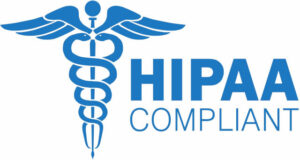 “Keep an eye on the leadless pacemaker technology space and watch for upcoming clinical trial data to determine best options for your clinic and patients.”
“Keep an eye on the leadless pacemaker technology space and watch for upcoming clinical trial data to determine best options for your clinic and patients.”
by Mark Matechik, MS, CCDS, PrepMD Account LeadMark is one of the experts on the PrepMD Clinic Solutions Team, helping providing excellent patient care through their CIED remote monitoring software and services
Most vendors are now offering some form of leadless pacemaker technology, be it a single lead that includes ventricular pacing and atrial sensing, leadless pacemakers, or ICDs with subcutaneous leads. Citing decreased complication rates and easier or fewer extractions, most of the EP world is now getting on board.
As new products continue to hit the market, it’s good to take a step back and look at the data and evidence supporting the use of these novel devices.
Medtronic was the first to release a truly leadless pacemaker in the Micra VR device, released in 2015. Delivered via femoral catheter, there was no need for transvenous leads or a pacemaker pocket. Early data from the IDE (Investigational Device Exemption) and PAR (Post-Approval Registry) studies showed excellent results that met study endpoints. More recently, the Micra excelled in a comparison study looking at large patient populations in real world settings compared to the IDE data (El-Chami et. al, 2018). Successful implantation was achieved in 99.1% of patients with a 2.1% major complication rate over 12 months (95% CI, 2.0%-3.7%), 63% less than patients with transvenous devices (p<0.001).
Also on the market is the Micra AV, which boasts VDD pacing and the ability to provide AV synchrony. The MARVEL 2 trial (Clemens et. al, 2020) showed that with VDD mode and accelerometer-based atrial sensing, the proportion of patients with >/=70% AV synchrony at rest was significantly greater than the proportion of patients in VVI 50 mode (89.2% vs. 26.8%, p<0.001). There were no pauses or oversensing-induced tachycardia. The sample size was quite low at n=75 and only evaluated AV synchrony at rest,, so while the results may not be representative of real-world situations, they are at the very least promising and something to watch closely.
While MDT builds its atrial sensing algorithm, Abbott has recently launched a leadless device as well. Following results of the LEADLESS II IDE study (Reddy et. al, 2022), the Aveir VR system is now FDA approved for implant. Successfully implanted in 98% of patients and able to electrically map before deploying, the Aveir system should serve as a good competitor to the Micra family of devices. What’s more, Abbott recently implanted the first true dual chamber leadless pacemaker in February of this year as part of the Aveir DR i2i study. Contrasting Medtronic’s approach of including atrial sensing in one device, Abbott’s Aveir DR is actually two separate implants, one in the ventricle and one in the atrium. The study has a goal of enrolling 550 patients with primary endpoints focusing on the DR system as a whole (complication rates, acceptable thresholds, etc). Secondary endpoints will look more closely at the atrial implant individually. Primary results are expected November 2023 and study completion is slated for November 2025.
Boston Scientific is taking the leadless trend in an entirely different direction. With the S-ICD successfully on the market for years, Boston Scientific is currently enrolling in the MODULAR ATP trial which involves an EMBLEM S-ICD system implanted concurrently with the EMPOWER MPS (Modular Pacing System) leadless pacemaker. One of the most significant critiques of the S-ICD is that patients who develop a need for transvenous pacing after implant will require an entirely new system. Assuming the Empower makes it to market, a physician can add the Empower leadless device to the already existing S-ICD system with no transvenous leads necessary. Furthermore, a combined mCRM system (S-ICD defibrillator and Empower leadless pacemaker) can provide ATP for fast, organized rhythms in an attempt to convert without the need for a shock. Modular ATP is sponsored by Boston Scientific and will look at primary endpoints of complication rates, communication success between devices, and adequate capture thresholds. Secondary endpoints will examine the Empower’s rate sensor and all-cause survival. If successful, this system will be the first to provide pacing and defibrillation without the use of transvenous leads.
It is truly amazing to see the increased options for patients with pacing considerations even over the last couple of years. We’re no longer tied to traditional RV apical pacing systems. Leadless pacemakers are becoming increasingly popular as a primary pacing option, or especially in patients with limited vascular access, occlusions, or infections. Keep an eye on this space and upcoming trial data to determine what the best option is for you, your clinics, or your patients.
For additional information visit these reference websites:
https://pubmed.ncbi.nlm.nih.gov/30103071/
https://pubmed.ncbi.nlm.nih.gov/31709982/
https://www.jacc.org/doi/full/10.1016/j.jacep.2021.11.002







